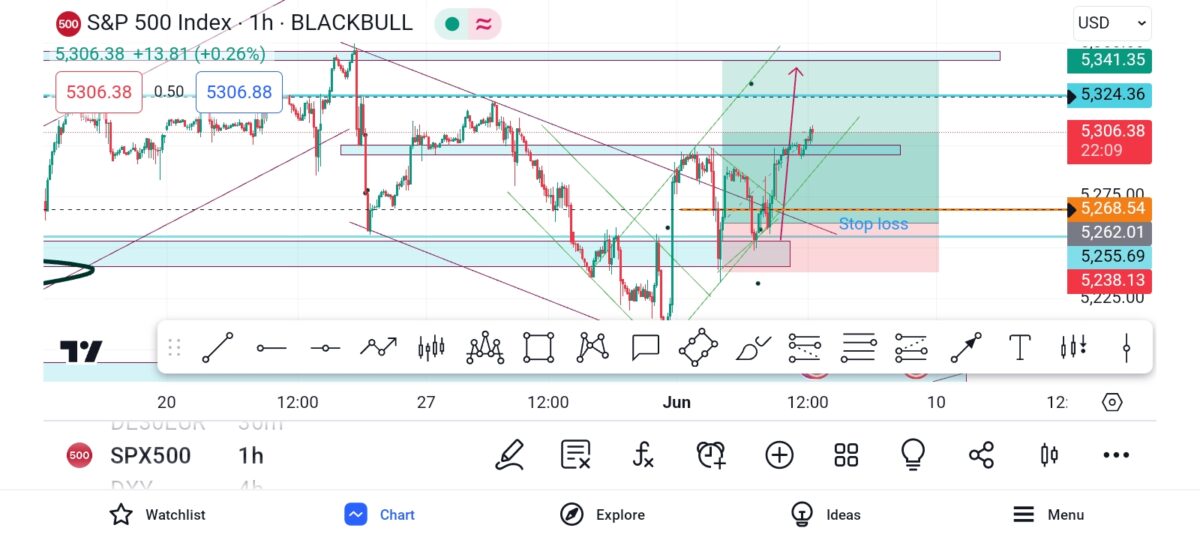Understanding Price Action
Mastering technical analysis requires a solid grasp of price action. Price action refers to the movement of the overall market price.
Retail traders utilize price action to discern whether the market is bullish or bearish, using this insight to make calculated trades.
When an index like the Nasdaq is bullish, it simply means the market is trending upwards. Conversely,

when the Nasdaq index is bearish, it indicates that the market is trending downwards.

Retail traders who understand price action study past market trends to predict future market movements, enabling them to make informed and strategic trades.
Mastering Technical Analysis
Technical analysis encompasses various techniques that retail traders use to make calculated decisions on whether to buy or sell forex pairs (e.g., EUR/USD, GBP/USD) or indices (e.g., S&P 500, Nasdaq 100).
How Do Retail Investors Know When to Buy or Sell?
The reason many traders fail to make a profit is that they struggle to apply technical analysis effectively.
This prevents them from identifying whether they are strong buyers or sellers. It is crucial to trade with the market, not against it,
because we do not control the market—we only follow it. To understand the flow of price, one must first recognize that the market moves in three trends.
Bullish Trend
A bullish trend indicates that a specific stock, index, or commodity is performing well.
For example, when we observe a bullish market in Apple (AAPL) stock using technical analysis, it signals that retail traders should ideally look for buying opportunities (trading with the market).
Conversely, traders seeking selling opportunities in a bullish market are essentially trading against the market.
I personally do not recommend trading against the market. While it is achievable through practice,
I wouldn’t advise it, especially for beginners. I will teach you how I trade personally, not strategies I don’t use.

Bearish Trend
A bearish trend, identified through technical analysis, informs us that a specific stock, index, or commodity is underperforming.
For instance, a bearish market in Tesla (TSLA) stock suggests that retail traders should ideally look for selling opportunities (trading with the market).
On the other hand, traders seeking buying opportunities in a bearish market are trading against the market. Again, I don’t recommend trading against the market. Though possible with experience, it’s not advisable for those just starting out.
Consolidation Trend
The last trend you may encounter is a consolidation trend, which occurs when the market is indecisive.
This trend signifies a balance between sellers and buyers. Seasoned traders often watch for these trends as they can also be profitable.
Typically, after a period of consolidation lasting a week or so, the market often breaks into a bullish or bearish trend.
What to Expect: Mastering Technical Analysis
It’s important to recognize that trading is a game. Just like playing FIFA with friends, sometimes you win, sometimes you lose. Forex trading operates on the same principle.
Your goal is to avoid letting losses affect your mindset. Similar to FIFA, where your objective is to equalize and then score to win,

in forex, your goal is to outperform the market. How does one achieve this, considering only a mere 10% succeed? The answer lies in mastering technical analysis.
I’m excited to teach you how to use price action to your advantage, helping you become part of the successful 10%.
I will show you exactly how to trade in bullish, bearish, and even consolidation channels using technical analysis.
Mastering Technical Analysis: Support and Resistance
Support and resistance are areas in the market where traders look for buying or selling opportunities.
At resistance levels, traders typically look for selling opportunities because the market often reverses downward from these points.
Conversely, at support levels, traders look for buying opportunities because the market often reverses upward.
I continuously emphasize the importance of using stop-loss orders in my teachings.
Just as it is easy for us to identify these areas, market makers and institutional traders also target these zones to exploit traders who do not use stop losses,
are impatient, or do not know how to utilize these areas effectively. Market makers can legally manipulate these levels to close their own positions due to the size of their investments.
Warren Buffett once stated that the stock market is a transfer of wealth from the impatient to the patient, highlighting the importance of a disciplined and patient trading approach.
Impulse and Correction: The Power of Price Action
We have identified that the market moves in three trends: uptrend, downtrend, and consolidation trend.
While the market moves in these trends, it’s important to note that it also creates a series of impulse and correction moves.
An impulse move occurs when the price of a currency pair or index covers a wide distance in the market in a short period (buy/sell)
influenced by market volatility. Once you learn the technical approach required to successfully trade impulse moves, you will understand why I say volatility is your friend.
A correction, also known as a pullback or retracement, happens when the market temporarily changes direction to regenerate liquidity before continuing in its intended direction.
I sometimes place my entries (with proper timing and skill) during a correction (law: after a correction follows an impulse) to capitalize on the impulse move.
I will also cover advanced technical trading sessions later.
Conclusion: Mastering Technical Analysis: The Power of Price Action
Mastering technical analysis is about understanding the market’s movements and learning how to interpret price action to make informed trading decisions.
By recognizing bullish, bearish, and consolidation trends, and by strategically using support and resistance levels, retail traders can significantly improve their chances of success.
Remember, patience and discipline are crucial in trading, as highlighted by Warren Buffett.
Embrace the market’s volatility and learn to harness it through impulse and correction moves.
With dedication and the right approach, you can become part of the successful 10% of traders. Let’s embark on this journey together and master the power of price action in technical analysis.


One thought on “Mastering Technical Analysis: The Power of Price Action”
Comments are closed.